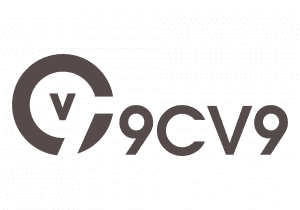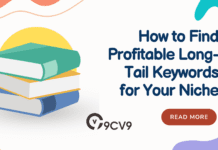Key Takeaways
- Brand protection software in 2025 is increasingly powered by AI, machine learning, and real-time monitoring technologies.
- Global businesses are prioritizing brand security to combat counterfeiting, domain abuse, and IP theft across digital platforms.
- Cloud-based, scalable brand protection solutions are driving ROI and improving enforcement efficiency in diverse industries.
In today’s increasingly digital and globalized marketplace, safeguarding a company’s brand has become more challenging—and more critical—than ever before.
As counterfeit products, domain squatting, intellectual property theft, and online impersonations continue to rise, businesses of all sizes are seeking robust and innovative solutions to ensure the integrity and security of their brand.
This growing demand has fueled rapid advancements in the brand protection software industry, making 2025 a pivotal year marked by significant shifts, evolving strategies, and notable statistical trends.
Also, read our top guide on the Top 8 Best Brand Protection Software To Use in 2025.

Brand protection software has evolved from simple monitoring tools into comprehensive digital ecosystems that use cutting-edge technologies such as artificial intelligence, machine learning, image recognition, and data analytics. These platforms help organizations detect, track, and eliminate brand infringements across various online channels, including e-commerce marketplaces, social media platforms, websites, mobile apps, and even the dark web. The surge in digital commerce, particularly in the post-pandemic era, has further intensified the need for companies to defend their intellectual property and maintain consumer trust by proactively identifying potential threats.
As counterfeit activities become more sophisticated, brand protection software has adapted by incorporating automated detection mechanisms, real-time alerts, and enforcement capabilities that span global markets. The latest tools not only prevent revenue loss caused by fraudulent sellers but also mitigate reputational damage and legal risks. These capabilities are now seen as mission-critical for businesses in industries such as fashion, pharmaceuticals, electronics, automotive, consumer goods, and luxury retail—where brand value directly influences purchasing behavior.
In 2025, the brand protection software landscape is being shaped by several key trends. Cloud-based deployment, integration with enterprise cybersecurity systems, AI-powered image and text analysis, and advanced threat intelligence are redefining how brands monitor and combat digital infringement. Furthermore, as regulatory frameworks tighten and cross-border enforcement becomes more collaborative, companies are increasingly leveraging software solutions to meet compliance requirements and protect their intellectual property on a global scale.
This blog delves deep into the most compelling brand protection software statistics, data points, and market trends that define 2025. By examining user adoption rates, industry-specific insights, ROI metrics, threat detection capabilities, and emerging technological innovations, this comprehensive overview provides valuable knowledge for business leaders, legal professionals, cybersecurity experts, and digital marketers aiming to secure their brand in an increasingly complex digital ecosystem.
Whether you’re evaluating a new brand protection solution or simply looking to stay ahead of the curve, the insights compiled here will help you understand the current state of the industry and where it’s heading. From revealing market growth projections to spotlighting the most effective technologies, these top 20 statistics and trends offer a data-driven look at how brands are protecting themselves in 2025—and why staying proactive is more important than ever.
Top 20 Brand Protection Software Statistics, Data & Trends in 2025
- In 2023, the global brand protection software market was valued at approximately $665.86 million, and it is projected to expand significantly, reaching an estimated $3.172 billion by the year 2032, which corresponds to a compound annual growth rate (CAGR) of 18.94% between 2024 and 2032.
- The global online brand protection software market was valued at $2.8 billion in 2023, and analysts forecast that this market will grow to $8.3 billion by 2033, reflecting a steady compound annual growth rate of 11.5% over the period from 2025 to 2033.
- In North America, the brand protection software market size was estimated at $1.4 billion in 2024, and it is expected to triple over the next decade, reaching $4.2 billion by 2033, driven by increasing demand for digital brand security solutions.
- The European market for online brand protection software was valued at $0.8 billion in 2024, with projections indicating growth to $2.4 billion by 2033, as companies across the region intensify efforts to combat counterfeiting and brand infringement.
- The Asia-Pacific region’s brand protection software market was valued at $0.5 billion in 2024 and is anticipated to experience the fastest growth among all regions, expanding to $1.9 billion by 2033 due to rising e-commerce activity and internet penetration.
- According to Allied Market Research, the overall brand protection software market is expected to grow at a compound annual growth rate of 19.4% between 2025 and 2033, reflecting strong global demand for solutions that safeguard intellectual property and brand reputation.
- The brand compliance software segment alone was valued at $2 billion in 2025 and is projected to triple in size to $6 billion by 2033, growing at an annual rate of 15%, as organizations increasingly adopt software to ensure consistent brand messaging and regulatory adherence.
- Intellectual property enforcement efforts, supported by brand protection software, enable companies to recover on average 70% of the revenue lost due to trademark infringements, highlighting the financial impact of effective brand protection strategies.
- Automated brand protection tools have been shown to identify counterfeit product listings up to three times faster than traditional manual methods, which can reduce potential revenue losses by as much as 40% for affected brands.
- For example, a company losing 5% of $10 million in annual revenue to counterfeit sales can achieve a return on investment (ROI) of approximately 900% by investing $50,000 in brand protection software that helps recover $500,000 in lost revenue.
- Red Points, a leading brand protection platform, processes and analyzes over 2.7 billion data points every month to detect and remove counterfeit listings, and it currently serves more than 1,300 global brands across various industries.
- According to Gartner, more than 65% of large enterprises worldwide have adopted brand protection software solutions to safeguard their intellectual property and maintain brand integrity in increasingly complex digital marketplaces.
- BrandShield’s annual report indicates that the number of counterfeit listings detected by their software increased by 25% year-over-year, reflecting both the growing threat of counterfeiting and the effectiveness of automated detection technologies.
- Cloud-based brand protection software adoption is growing rapidly, with IDC reporting a compound annual growth rate of 22% between 2023 and 2028, driven by the scalability and cost-effectiveness of cloud solutions.
- Thomson Reuters reports that companies using brand protection software experience a 50% reduction in the time required to resolve brand infringement cases, significantly accelerating enforcement and mitigation efforts.
- The OECD has documented a 30% increase in counterfeit product sales through e-commerce platforms between 2022 and 2024, underscoring the urgent need for effective online brand protection software.
- A survey conducted by LexisNexis found that 60% of brand protection software users reported a significant reduction in legal costs due to automated monitoring and enforcement capabilities provided by these solutions.
- Leading brand protection software providers such as MarkMonitor report removing over 1 million counterfeit listings every month, demonstrating the scale and effectiveness of automated brand enforcement tools.
- BrandVerity’s case studies reveal that companies using automated brand protection tools save an average of 120 hours per month in manual monitoring and enforcement activities, allowing teams to focus on strategic initiatives.
- Verified Market Research highlights that the brand protection software market is driven by increasing counterfeit risks, with AI and machine learning technologies enhancing capabilities such as fraud detection, automated reporting, and counterfeit identification, contributing to the market’s rapid growth.
Conclusion
As the digital economy continues to expand and evolve, the importance of brand protection has grown exponentially. The data and statistics presented throughout this blog on the top 20 brand protection software trends and metrics in 2025 clearly illustrate that safeguarding brand identity, intellectual property, and consumer trust is no longer a secondary consideration—it has become a core business priority across industries. From combating counterfeit goods and online impersonations to enforcing trademark rights and regulatory compliance, brand protection software now plays a pivotal role in ensuring long-term sustainability and success in an increasingly competitive marketplace.
The landscape in 2025 is marked by rapid technological advancements and rising complexity in threats. Companies are no longer just reacting to brand infringements—they are proactively leveraging advanced technologies such as artificial intelligence, machine learning, image recognition, and predictive analytics to identify potential risks before they escalate. With the emergence of global e-commerce platforms, decentralized digital spaces, and new-age marketing channels like social media and influencer platforms, the scope of brand infringement has widened. In response, brand protection software vendors are offering more comprehensive and real-time monitoring capabilities, enabling businesses to maintain tighter control over their digital and physical brand presence.
One of the most significant takeaways from the 2025 statistics is the growing reliance on cloud-based solutions and API integrations. These features offer scalability, agility, and seamless coordination with other enterprise systems such as cybersecurity infrastructure, legal compliance tools, and digital marketing platforms. This interoperability allows organizations to adopt a holistic approach to brand protection—blending legal, technological, and operational strategies to minimize risk while maximizing brand equity.
Additionally, data shows that organizations investing in brand protection software are experiencing measurable returns in terms of revenue preservation, reduction in IP-related legal disputes, and enhanced customer trust. The cost of inaction—ranging from loss of consumer confidence to reputational damage and regulatory penalties—is far greater than the investment in effective protection solutions. Therefore, forward-thinking companies are increasingly incorporating brand protection strategies into their overall risk management and digital transformation roadmaps.
Moreover, regulatory bodies and governments around the world are stepping up their efforts to support brand protection initiatives. Increased international collaboration, tighter enforcement of intellectual property laws, and the availability of legal takedown mechanisms are encouraging businesses to adopt digital brand defense tools that align with legal frameworks and ensure consistent enforcement across jurisdictions.
As we move further into 2025 and beyond, it is evident that the brand protection software industry will continue to mature, driven by technological innovation, rising consumer awareness, and the high stakes associated with brand value. Businesses that prioritize proactive protection measures and invest in data-driven software solutions will not only stay ahead of counterfeiters and brand abusers but will also strengthen their competitive position in the market.
In conclusion, the top 20 brand protection software statistics and trends in 2025 reflect a transformative period for how brands secure their digital and physical presence. For organizations aiming to build resilient brand identities, reduce risk exposure, and adapt to the dynamic threat landscape, embracing robust brand protection software is no longer optional—it is a strategic imperative. As threats evolve, so too must the solutions, making continuous investment in and adaptation of brand protection technology essential to achieving sustained success and trust in a digital-first world.
If you find this article useful, why not share it with your hiring manager and C-level suite friends and also leave a nice comment below?
We, at the 9cv9 Research Team, strive to bring the latest and most meaningful data, guides, and statistics to your doorstep.
To get access to top-quality guides, click over to 9cv9 Blog.
People Also Ask
What is brand protection software?
Brand protection software is a digital tool that helps businesses monitor, detect, and remove unauthorized use of their brand assets online and offline.
Why is brand protection important in 2025?
With the rise of digital commerce and cyber threats, brand protection is essential in 2025 to prevent counterfeiting, IP theft, and reputational damage.
What trends are shaping brand protection software in 2025?
AI-powered detection, real-time monitoring, image recognition, and cloud-based platforms are key trends driving innovation in brand protection software.
How does AI enhance brand protection?
AI improves accuracy and speed in detecting infringements by analyzing large volumes of data and identifying suspicious patterns or fake listings.
What industries benefit most from brand protection software?
Industries such as fashion, electronics, pharmaceuticals, automotive, and luxury goods rely heavily on brand protection to combat counterfeit risks.
How do brand protection tools detect counterfeits?
They scan online platforms, marketplaces, and websites using keyword analysis, image matching, and data tracking to flag unauthorized products.
What role does image recognition play in brand protection?
Image recognition identifies fake or copied visuals, logos, and packaging across digital platforms, helping remove counterfeit listings faster.
Is brand protection software effective against phishing sites?
Yes, many tools detect and take down phishing websites that impersonate official brands to deceive customers and steal information.
What are the top features of brand protection software in 2025?
Key features include real-time alerts, automated takedowns, global monitoring, AI analytics, domain tracking, and social media surveillance.
How does brand protection software integrate with cybersecurity?
It complements cybersecurity by identifying brand misuse, phishing attempts, and fraudulent activity outside the internal IT network.
Can small businesses use brand protection software?
Yes, many platforms offer scalable solutions tailored to small businesses, allowing them to safeguard their brand assets affordably.
What are the cost benefits of brand protection software?
It prevents revenue loss, reduces legal expenses, and protects customer trust, delivering strong ROI compared to the cost of brand damage.
How does cloud-based brand protection improve efficiency?
Cloud-based tools offer faster deployment, scalability, and real-time data access, making monitoring and response more streamlined.
What is automated takedown in brand protection software?
It’s a feature that automatically initiates removal requests for infringing content, saving time and speeding up enforcement processes.
Which platforms are commonly monitored by brand protection software?
These tools scan e-commerce sites, social media, search engines, mobile app stores, and the dark web for potential brand violations.
What are the latest brand protection statistics in 2025?
Statistics show a sharp rise in online infringements and increased adoption of AI-based brand protection tools across global markets.
How do software tools track fake domains?
They use domain monitoring and threat intelligence to detect typosquatting, spoofed websites, and unauthorized domain registrations.
Can brand protection tools monitor the dark web?
Yes, some advanced solutions include dark web surveillance to identify illegal activities or unauthorized brand mentions in hidden networks.
How does brand protection software support legal teams?
It provides evidence, reporting, and documentation needed for legal takedowns, cease-and-desist letters, and litigation support.
What is the impact of counterfeiting on brand value?
Counterfeiting can erode brand trust, reduce revenue, damage reputation, and lead to long-term customer loyalty loss.
Are brand protection tools customizable for different markets?
Yes, many offer multi-language support and region-specific monitoring to meet local regulations and market challenges.
What KPIs should brands track for protection success?
Key KPIs include number of takedowns, detection speed, enforcement success rate, ROI, and reduction in infringement volume.
How does machine learning help detect brand threats?
Machine learning models identify evolving infringement patterns and adapt over time to improve detection accuracy.
Is brand protection software GDPR and CCPA compliant?
Reputable tools comply with data privacy regulations such as GDPR and CCPA, ensuring secure data handling during monitoring.
What’s the ROI of brand protection software in 2025?
Companies report significant ROI through revenue preservation, lower legal costs, and protection of long-term brand equity.
How often should brand protection scans be performed?
Most solutions offer continuous real-time scanning, but regular manual audits are also recommended for maximum coverage.
Can brand protection software identify fake social media accounts?
Yes, it can flag and report impersonation profiles that misuse a brand’s name, images, or logos to mislead followers.
What are the enforcement options in brand protection software?
Tools offer takedown requests, cease-and-desist templates, case tracking, and legal support for IP enforcement.
What’s the future of brand protection software?
The future includes deeper AI integration, blockchain tracking for authenticity, and more proactive, automated enforcement tools.
How can brands choose the right protection software?
Brands should evaluate features, scalability, industry fit, enforcement capabilities, and user reviews before selecting a solution.
Sources:
- Fortune Business Insights
- MarketWatch
- Grand View Research
- Allied Market Research
- Verified Market Research
- International Trademark Association (INTA)
- Red Points Report
- Forbes
- Gartner
- BrandShield Annual Report
- IDC
- Thomson Reuters
- OECD Report
- LexisNexis Survey
- MarkMonitor Case Studies
- BrandVerity Case Study
- Verified Market Research































![Writing A Good CV [6 Tips To Improve Your CV] 6 Tips To Improve Your CV](https://blog.9cv9.com/wp-content/uploads/2020/06/2020-06-02-2-100x70.png)


